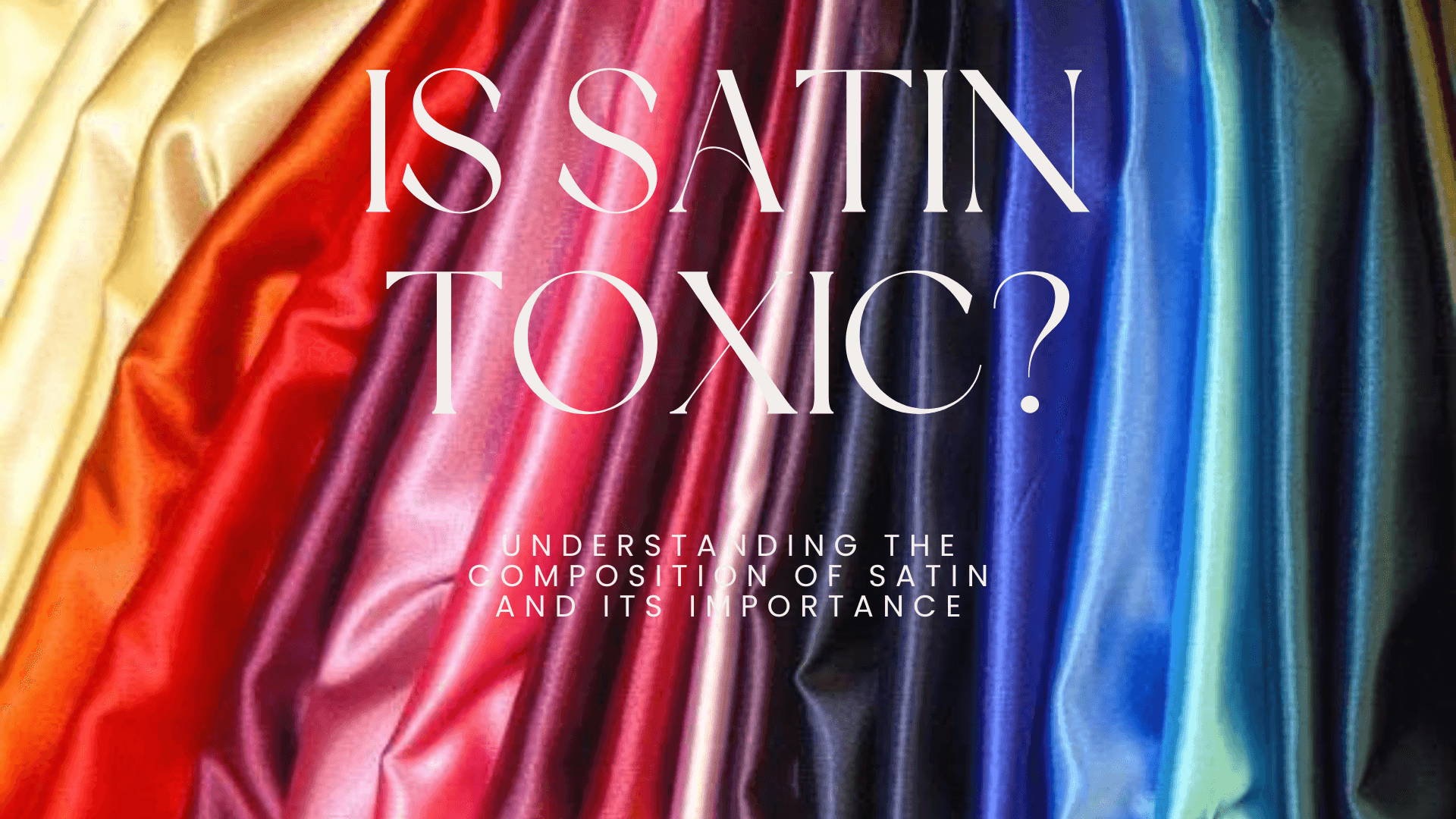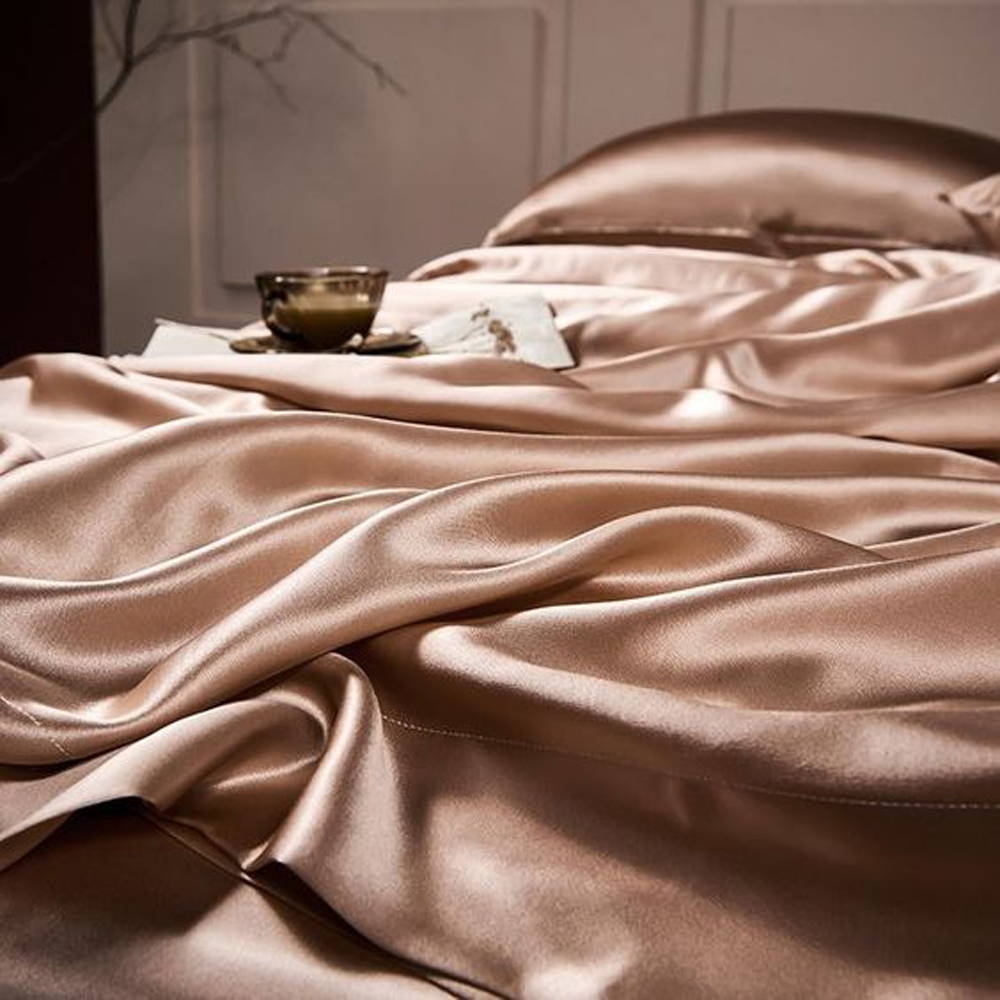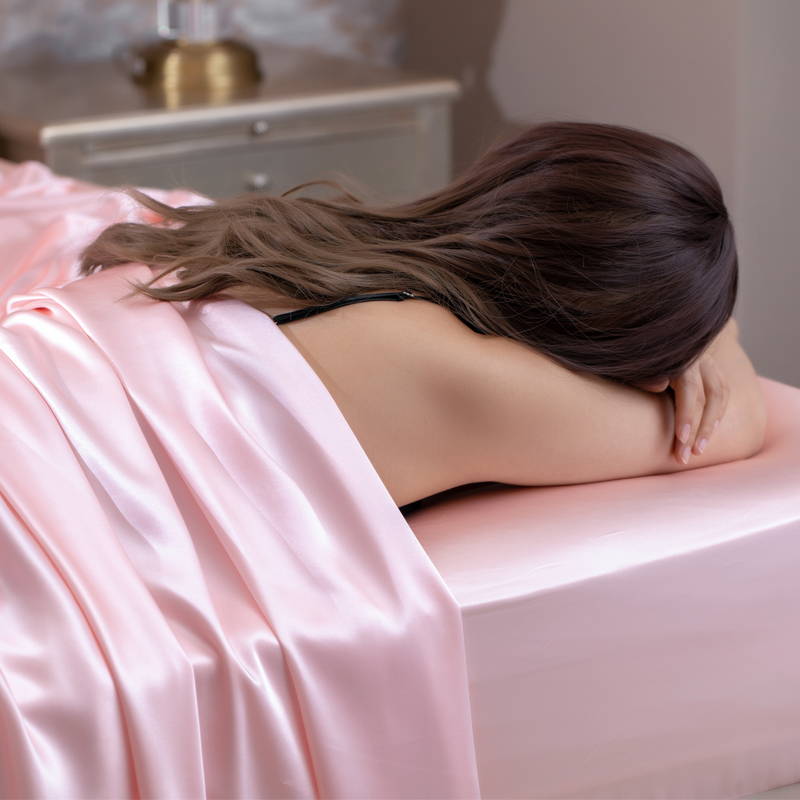
Is Satin Toxic? Understanding the Composition of Satin And Its Importance
What is Satin?
Satin is a type of synthetic fabric that is often confused with natural silk. It has a smooth, shiny appearance that makes it look similar to silk. However, satin is typically made from materials like rayon or polyester, rather than the natural silk fibers.
The manufacturing process used to create polyester satin can sometimes introduce harmful chemicals into the fabric. These chemicals can be problematic for both your skin and hair, so it's important to understand the potential risks associated with satin.
Subscribe
To join our mailing list and never miss a silk update!
Potential Toxins in Satin
During the production of satin, various chemicals may be used, including:
Formaldehyde: This chemical is often used to make satin fabrics wrinkle-resistant. However, formaldehyde can be a skin irritant and is classified as a carcinogen, meaning it can potentially cause cancer.
Azo Dyes: These synthetic dyes are commonly used to color satin fabrics. Some azo dyes have been linked to the release of harmful aromatic amines, which can be toxic and potentially carcinogenic.
Heavy Metals: Certain heavy metals, such as lead, cadmium, or chromium, may be present in satin due to the dyeing or finishing processes. Exposure to these heavy metals can be harmful, especially for young children.
These toxins can be absorbed through the skin, potentially causing health issues, especially for those with sensitive skin or who regularly come into contact with satin fabrics, such as in bedding or clothing.
Comparison to Natural Silk
In contrast to satin, natural silk is a hypoallergenic material that does not contain the same harmful additives. Silk is a natural protein fiber produced by silkworms, and it is known for its many benefits for hair and skin:
Breathability: Silk is a highly breathable fabric, allowing your skin to "breathe" and reducing the risk of skin irritation.
Moisture-Wicking: Silk helps to draw moisture away from the skin, keeping you dry and comfortable.
Gentle on Skin and Hair: The smooth, soft texture of silk is gentle on both your skin and hair, reducing friction and potential damage.
Silk pillowcases and bedding offer a safer, healthier alternative to satin, as they do not contain the same synthetic chemicals and toxins. This can be especially beneficial for individuals with sensitive skin or who are concerned about the potential health impacts of their bedding and clothing choices.
Ensuring Safety in Bedding and Clothing
When selecting satin or silk fabrics, it's important to look for third-party certifications that can verify the safety of the product. Some certifications to look for include:
OEKO-TEX: This certification ensures that textile products have been tested and found to be free of harmful chemicals, meeting strict safety standards. Global Organic Textile Standard
(GOTS): This certification verifies that a product is made from organic, natural fibers and does not contain synthetic additives.
These certifications can provide peace of mind and help you make more informed decisions about the fabrics you choose for your bedding, clothing, and other textile products.
Choosing Natural Materials
To minimize the risk of exposure to harmful toxins, it's generally recommended to choose natural fibers like silk, cotton, or linen over synthetic options like satin. These natural materials are less likely to contain hidden chemicals that can impact your health and well-being.
Silk, in particular, stands out as an excellent choice for both your skin and hair. As a natural, hypoallergenic fiber, silk is gentle, breathable, and moisture-wicking, providing numerous benefits compared to satin and other synthetic fabrics.
The Importance of Informed Choices
As a consumer, it's crucial to be aware of the potential risks associated with satin and other synthetic fabrics. By understanding the composition of these materials and the potential presence of harmful toxins, you can make more informed decisions about the products you bring into your home and use on your skin and hair.
Prioritizing safety and sustainability in your bedding, clothing, and other textile choices is an important step in maintaining your overall health and well-being. By selecting high-quality, certified natural materials like silk, you can enjoy the benefits of these materials while also providing peace of mind and avoiding potential health concerns.
The Difference Between Satin and Silk
While satin and silk may appear similar, there are distinct differences between these two fabrics:
Composition: Satin is a synthetic fabric, often made from materials like polyester or rayon. In contrast, silk is a natural protein fiber produced by silkworms
Texture: Satin has a smooth, shiny surface, while silk has a more delicate, soft, and slightly textured feel.
Breathability: Silk is a highly breathable fabric, allowing your skin to "breathe" and reducing the risk of irritation. Satin, being a synthetic material, is less breathable.
Hypoallergenic Properties: Silk is naturally hypoallergenic, making it a better choice for those with sensitive skin. Satin may contain synthetic chemicals that can cause skin irritation.
Durability: Silk is a strong, durable fabric that can last for many years with proper care. Satin, while appearing luxurious, may not be as long-lasting.
Environmental Impact: Silk production is a more sustainable and eco-friendly process compared to the manufacturing of synthetic satin fabrics.
The Benefits of Silk for Skin and Hair
Silk offers a range of benefits for both your skin and hair:
Skin Health: The smooth, gentle texture of silk helps to minimize skin irritation and friction, making it an ideal choice for those with sensitive skin. Silk is also naturally hypoallergenic, reducing the risk of allergic reactions.
Moisture Retention: Silk is a natural temperature regulator, helping to maintain the skin's optimal moisture levels and preventing dryness.
Anti-Aging Properties: The amino acids in silk may help to reduce the appearance of fine lines and wrinkles, promoting a more youthful complexion.
Hair Health: The smooth surface of silk helps to reduce friction and tangles, preventing hair breakage and damage. Silk also helps to lock in moisture, keeping your locks hydrated and healthy.
Better Sleep: Silk's temperature-regulating properties can help you sleep more comfortably, leading to a more restful night's sleep.
Satin vs. Silk Pillowcases
When it comes to pillowcases, the choice between satin and silk can have a significant impact on your skin and hair health.
Satin Pillowcases: Satin pillowcases may be more affordable, but they can still pose risks due to their synthetic composition. The friction created by satin can lead to skin irritation and hair damage.
Silk Pillowcases: Silk pillowcases offer a safer, more luxurious option. The natural fibers of silk minimize friction, reduce hair breakage, and help maintain the skin's moisture balance.
While satin pillowcases may be tempting due to their lower cost, the potential health benefits of silk make it a more desirable choice for those concerned about their skin and hair well-being.
Choosing the Right Pillowcase
When selecting a pillowcase, it's essential to consider the fabric composition of silk or satin pillowcases and any third-party certifications that ensure the safety of the product.
Look for pillowcases made from 100% pure mulberry silk, as this is the highest quality and most beneficial type of silk. Avoid synthetic satin or blended fabrics, as they may contain harmful chemicals.
Additionally, look for pillowcases that have been certified by organizations like OEKO-TEX or GOTS, which verify the use of safe, non-toxic materials.
By making an informed choice and selecting a high-quality silk pillowcase, you can enjoy the numerous benefits for your skin and hair, while also prioritizing your overall health and well-being.
Most Popular
DO SILK PILLOWCASES HELP WITH ACNE?
September 6,2023
Trending Articles
Conclusion
While satin may have an appealing sheen and texture, its synthetic composition can potentially expose you to harmful toxins that may impact your skin and hair health. In contrast, natural silk offers a safer, more beneficial alternative, providing a range of advantages for your overall well-being.
By understanding the differences between satin and silk, and making conscious choices to prioritize natural, certified materials, you can create a healthier environment for your skin and hair. Investing in quality silk products, such as pillowcases, can be a simple yet effective way to improve your daily self-care routine and promote long-term health and wellness.
Remember, your skin and hair deserve the best care, so take the time to explore the options and make an informed decision that aligns with your personal health priorities. With a little knowledge and the right choices, you can enjoy the luxurious benefits of silk without compromising your safety.
Related Products
Most Popular

Trending Articles




Subscribe
To join our mailing list and never miss a silk update!










